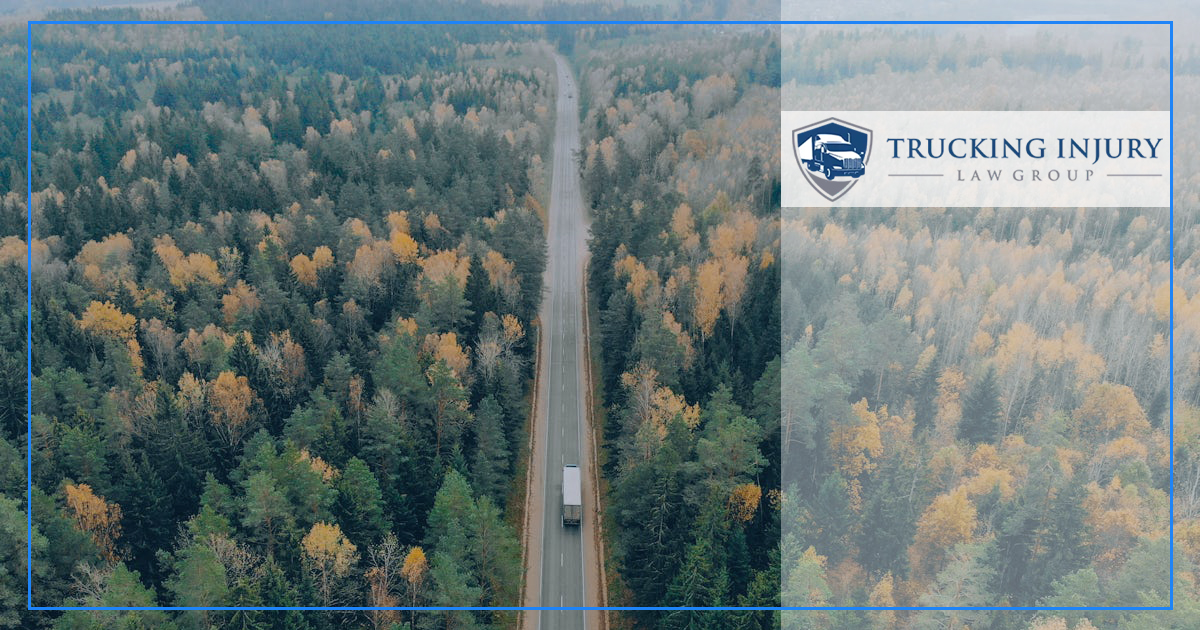What Is the Braking Distance for Large Trucks?
If you think about all the factors that result in crashes, a motorist’s inability to fully slow their vehicle to a halt in time to avoid running a red light or stop sign or colliding with the rear of another automobile is at the top of that list. Wrecks like these aren’t unique to passenger cars, though. They commonly affect tractor-trailers, too. That’s why it can be helpful for drivers to know the braking distance for large trucks. Continue reading as we’ll go into the ins and outs of braking distance so that you’re better prepared to share the road with big rigs.
How Long 18-Wheelers Take To Stop
If you’re looking for a quick answer about the braking distance for trucks, online sources suggest that it could take as long as 600 feet. This is double the amount it would typically take a passenger vehicle as it typically takes them the length of a football field to fully stop (300 feet).
If you’re looking for a fast answer on how long a trucker needs to stop after applying their brake, it takes an estimated five to six seconds or 40% longer than it takes for passenger car drivers to do the same.
Factors That Increase Tractor-Trailers Braking
First, it’s important to understand that just like it is with any other automobile, trucks just don’t come to a stop when their operators apply the brakes.
Instead, what figures into how long it takes to fully stop also involves:
- The trucker acknowledging any potential hazards that lie ahead, like a stalled vehicle, wildlife that has run into the road, etc.
- How long it takes the truck driver’s eyes to send a message to their brain that there’s an obstruction in the road that they need to slow down for and to apply the brake accordingly.
- The length of time it actually takes to slow the 18-wheeler once its operator applies the brake.
As for the latter point, various concerns, such as the following, can impact how much time passes between when a trucker brakes and the tractor-trailer stops:
- Road conditions: This may refer to the material from which the roadway was constructed (i.e., asphalt versus concrete) or its current state (i.e., ground up and gravely versus freshly paved) as well as what’s on it (i.e., snow, ice, wetness due to rain). Also, if you’ve seen a sign that says, “Bridges ice before roads,” not only is this here to remind you of the dangers of losing control of your vehicle on overpasses, but specifically doing so because it affects braking, including distances it takes to come to a stop, if even possible.
- Whether a truck has a conventional or anti-lock braking (ABS) system: Tractor-trailers equipped with ABS brakes may be more effective in stopping on some surfaces or conditions; however, that generally doesn’t hold true for icy or rocky roads.
- How heavy and well-secured a load is: Big rigs already weigh as much as 30 times that of passenger cars, given how they weigh up to 80,000 pounds. The fuller a trailer is that a tractor is hauling, the longer it is likely to take to fully stop when its operator brakes. Additionally, improperly secured loads, such as ones stored at the tail end of the trailer compared to those strapped securely in place closest to the cab, may lead a load to move upon the application of the brakes, thus resulting in a forward propulsion of the big rig, sometimes extending its braking distance.
- Speed matters: How fast a trucker is traveling when they apply their brakes will greatly impact how fast they can slow down. The Utah Department of Transportation (UDOT) actually performed a study investigating how speed impacted braking and determined that semi-trucks can take as long as 169 feet when traveling at 40 MPH to 525 feet at 65 MPH to come to a full stop. This is between 45 to 209 feet more than it would typically take a passenger car to do the same. The Federal Motor Carrier Safety Administration (FMCSA) contends that a trucker traveling 55 MPH needs at least 196 feet to stop in best-case scenarios, whereas UDOT determined it takes closer to 335 feet.
Another factor that can affect braking is the integrity of the brakes themselves. In other words, proper maintenance for all of the truck’s components matters.
For example, if the calipers are no longer grabbing as they should, the pads are worn down, or the brake fluid is low or old, these can affect how quickly trucks can slow down or come to a stop.
Dangers Posed by Braking Issues in the Trucking Industry
Each year, hundreds of thousands of truck crashes occur nationwide. Some of the most recent statistics compiled by the National Safety Council (NSC) suggest that in 2021 alone, at least 155,000 of them resulted in injuries.
Others resulted in fatalities, with 71% of those incidents affecting the occupants in other vehicles.
While this data doesn’t specifically speak to how many of these accidents were caused by driver error, mechanical issues, and other brake-related factors, many of these were likely responsible for at least a decent number of these incidents.
Delayed braking, like speeding and other reckless driving, maims and kills.
Our legal team at Trucking Injury Law Group is here if you or a close relative suffered harm in a rear-end accident with a trucker because a tractor-trailer operator wasn’t mindful of truck braking distances.
Contact us for a free consultation with a lawyer to discuss your right to demand compensation from negligent parties responsible for causing the crash that hurt you.






